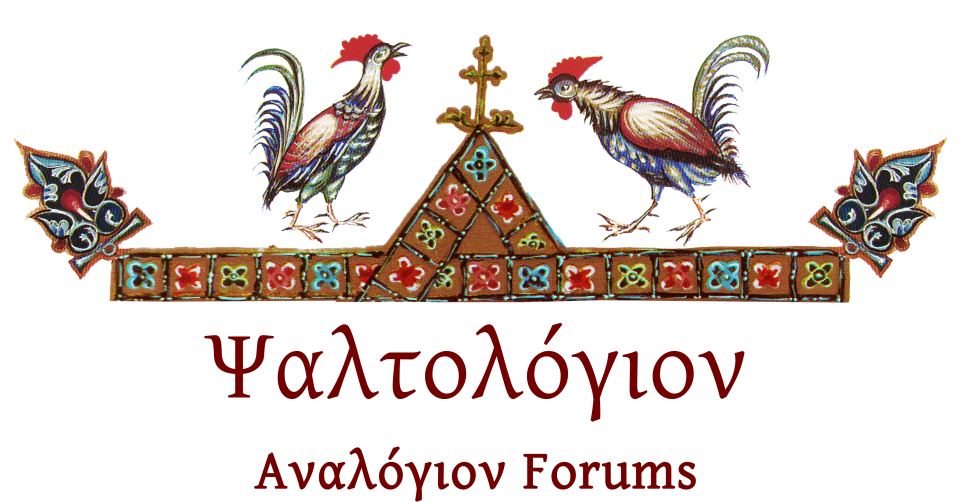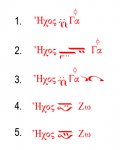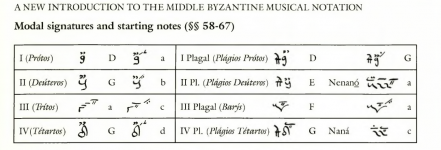tranastionetrimpr
New member
Hello guys, this is my first post. Greetings! 
I'm having trouble understanding some of the beginning martyria. (I attached an image below so that you can see what I mean.)
1) Why is the initial martyria of the third mode written with a nana chair (#1 in the file) in some books and with the symbol Γ " + two oligons + kentemata (#2) in other books? I know that the two oligons with kentemata is supposed to mean that the base note of the mode is three steps above Δι. Some psaltai told me that the second version is something that Simon Karas came up with. Is that true? Which one of the two is the more traditional (and most correct) one?
2) When am I supposed to write the martyria of the third mode with a continuous elaphron next to it (#3) and when not?
3) Same goes for Grave Mode. I've seen here two versions too: an oligon + deeplee + grave martyria underneath (#4) and an oligon + kentemata + grave martyria (#5) underneath. Can someone explain to me when to use the one or the other? And again - if this is a martyria that Simon Karas came up with which is the most correct one?
Thanks in advance.
In Christ,
tranastionetrimpr
I'm having trouble understanding some of the beginning martyria. (I attached an image below so that you can see what I mean.)
1) Why is the initial martyria of the third mode written with a nana chair (#1 in the file) in some books and with the symbol Γ " + two oligons + kentemata (#2) in other books? I know that the two oligons with kentemata is supposed to mean that the base note of the mode is three steps above Δι. Some psaltai told me that the second version is something that Simon Karas came up with. Is that true? Which one of the two is the more traditional (and most correct) one?
2) When am I supposed to write the martyria of the third mode with a continuous elaphron next to it (#3) and when not?
3) Same goes for Grave Mode. I've seen here two versions too: an oligon + deeplee + grave martyria underneath (#4) and an oligon + kentemata + grave martyria (#5) underneath. Can someone explain to me when to use the one or the other? And again - if this is a martyria that Simon Karas came up with which is the most correct one?
Thanks in advance.
In Christ,
tranastionetrimpr






